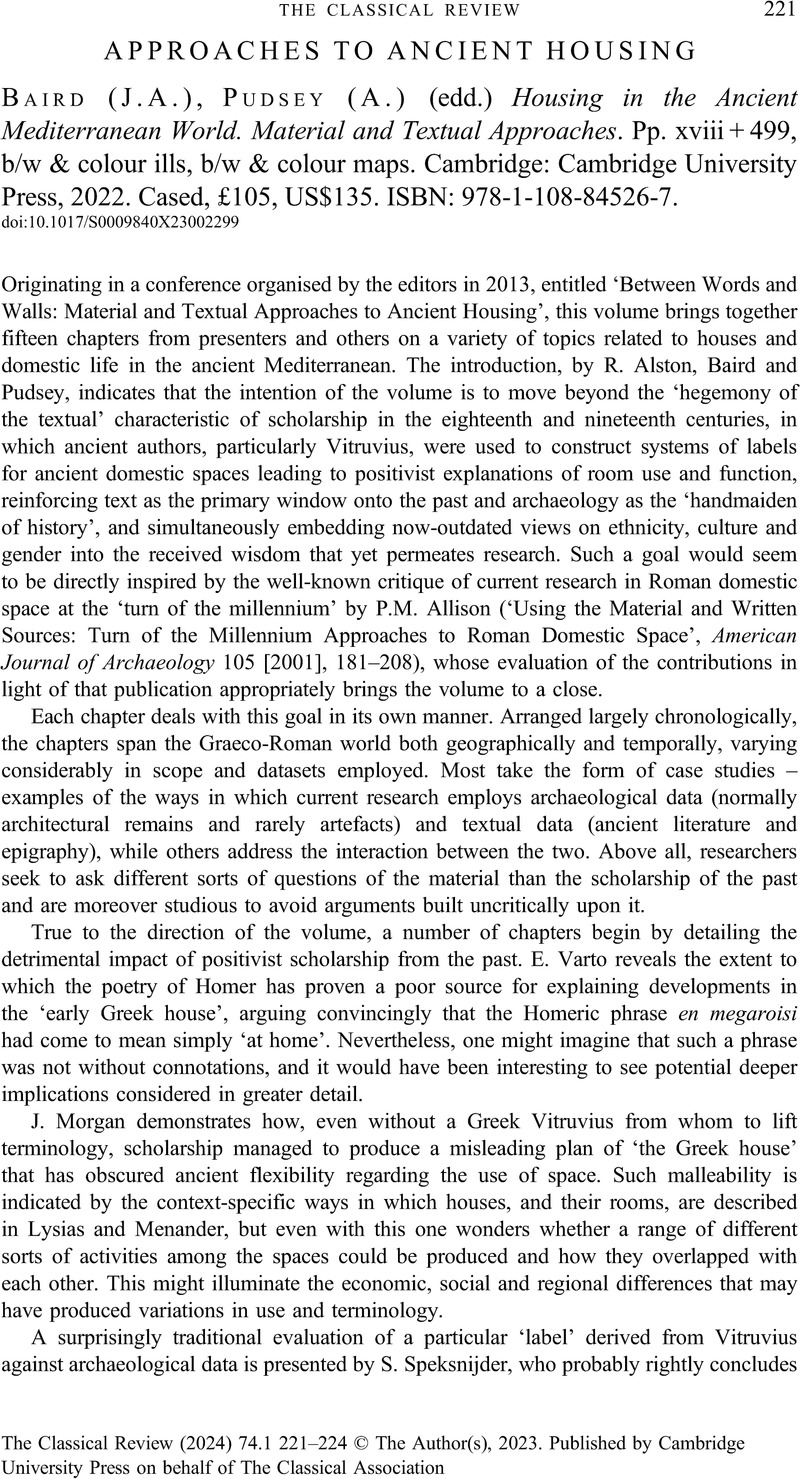No CrossRef data available.
Article contents
APPROACHES TO ANCIENT HOUSING - (J.A.) Baird, (A.) Pudsey (edd.) Housing in the Ancient Mediterranean World. Material and Textual Approaches. Pp. xviii + 499, b/w & colour ills, b/w & colour maps. Cambridge: Cambridge University Press, 2022. Cased, £105, US$135. ISBN: 978-1-108-84526-7.
Review products
(J.A.) Baird, (A.) Pudsey (edd.) Housing in the Ancient Mediterranean World. Material and Textual Approaches. Pp. xviii + 499, b/w & colour ills, b/w & colour maps. Cambridge: Cambridge University Press, 2022. Cased, £105, US$135. ISBN: 978-1-108-84526-7.
Published online by Cambridge University Press: 20 December 2023
Abstract
An abstract is not available for this content so a preview has been provided. Please use the Get access link above for information on how to access this content.

- Type
- Reviews
- Information
- Copyright
- Copyright © The Author(s), 2023. Published by Cambridge University Press on behalf of The Classical Association



